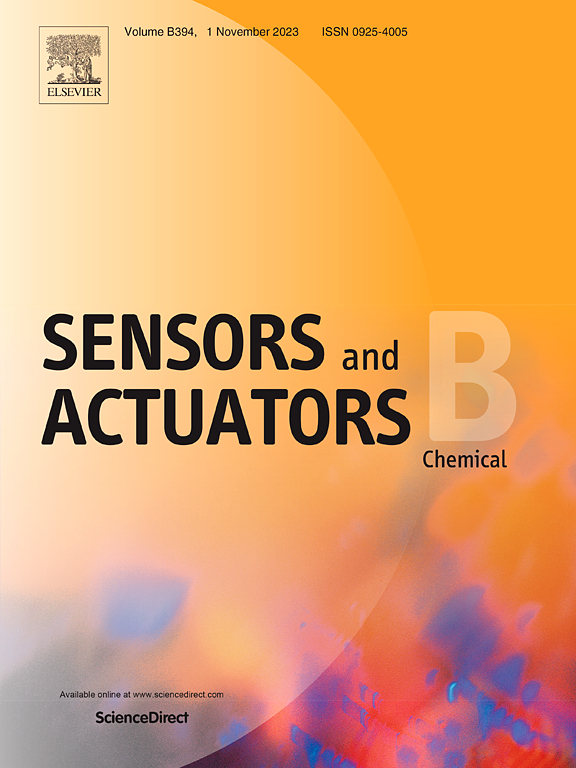Ratiometric fluorometry on microfluidic paper-based analytical device for simultaneous glucose and cholesterol detection using MnFe-layered double hydroxides as peroxidase mimic
IF 8
1区 化学
Q1 CHEMISTRY, ANALYTICAL
引用次数: 0
Abstract
A highly sensitive ratiometric fluorescence sensing system was developed for simultaneous glucose and total cholesterol (TC) detection in whole blood using MnFe-layered double hydroxides (MnFe-LDHs) as a peroxidase mimic, combined with an o-phenylenediamine (OPD) substrate and nitrogen-doped graphene quantum dots (N-GQDs). The detection platform, an X-shaped laminated microfluidic paper-based analytical device (XL-μPAD), was fabricated via laser printing and cutting. The MnFe-LDHs' large surface area and layered structure provide a high affinity for OPD, with a Michaelis–Menten constant (KM) of 0.0127 mmol L−1. Upon placing a drop of blood on the XL-μPAD sample pad, the enzymatic reactions of glucose and TC produce H2O2, which MnFe-LDHs convert to hydroxyl radicals (•OH). These radicals oxidize OPD into fluorescent 2,3-diamino phenazine (DAP) with emission at 560 nm. Meanwhile, the N-GQDs emit fluorescence at 415 nm, which is quenched by DAP through the inner filter effect (IFE) and dynamic quenching, enabling ratiometric sensing via the intensity ratio (I560/I415). As H2O2 levels increase, a visible green emission appears, correlating with glucose and TC levels. This XL-μPAD system demonstrates promising potential as a portable device for multiplex biomarker detection and diagnostic applications.

求助全文
约1分钟内获得全文
求助全文
来源期刊

Sensors and Actuators B: Chemical
工程技术-电化学
CiteScore
14.60
自引率
11.90%
发文量
1776
审稿时长
3.2 months
期刊介绍:
Sensors & Actuators, B: Chemical is an international journal focused on the research and development of chemical transducers. It covers chemical sensors and biosensors, chemical actuators, and analytical microsystems. The journal is interdisciplinary, aiming to publish original works showcasing substantial advancements beyond the current state of the art in these fields, with practical applicability to solving meaningful analytical problems. Review articles are accepted by invitation from an Editor of the journal.
 求助内容:
求助内容: 应助结果提醒方式:
应助结果提醒方式:


